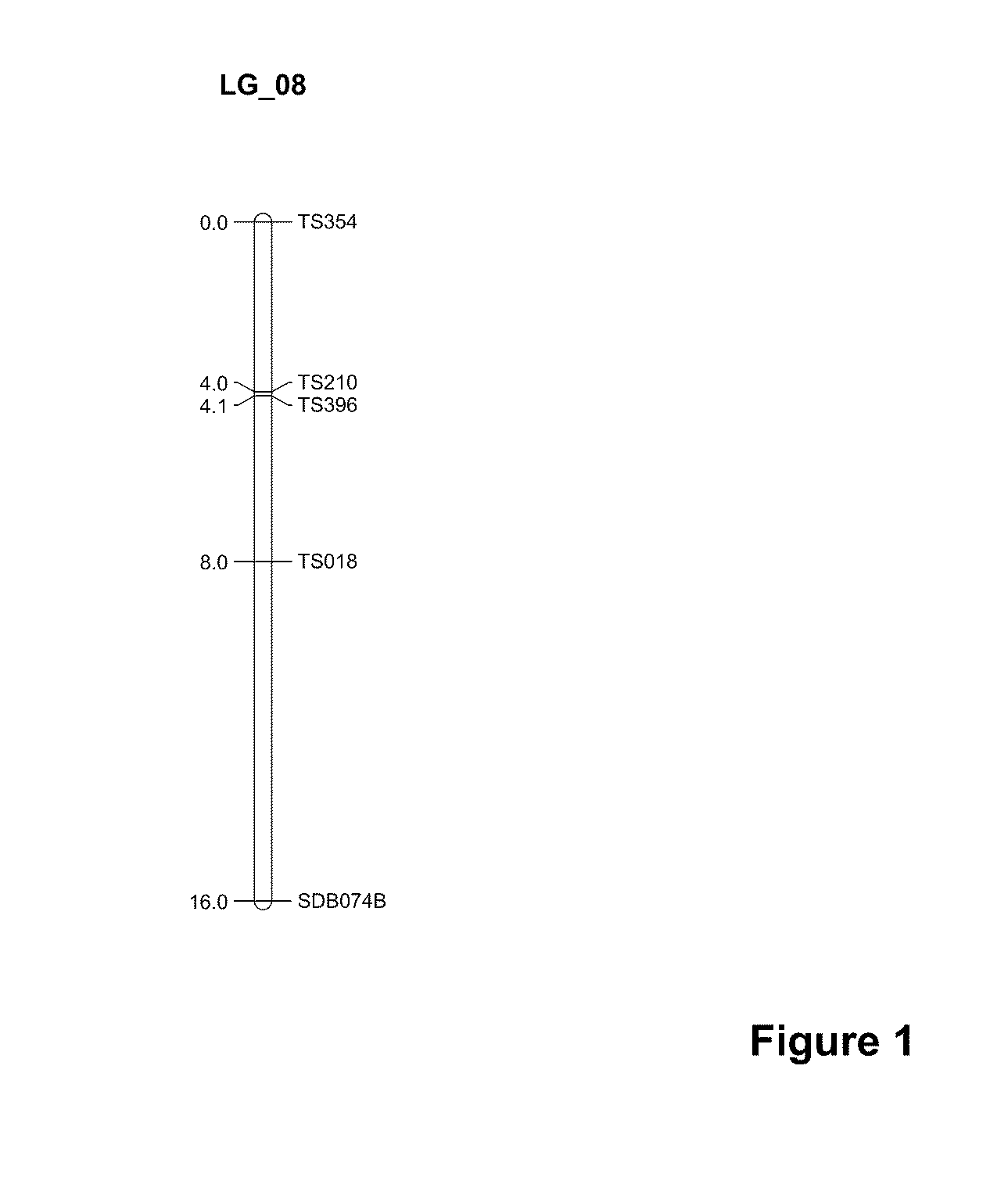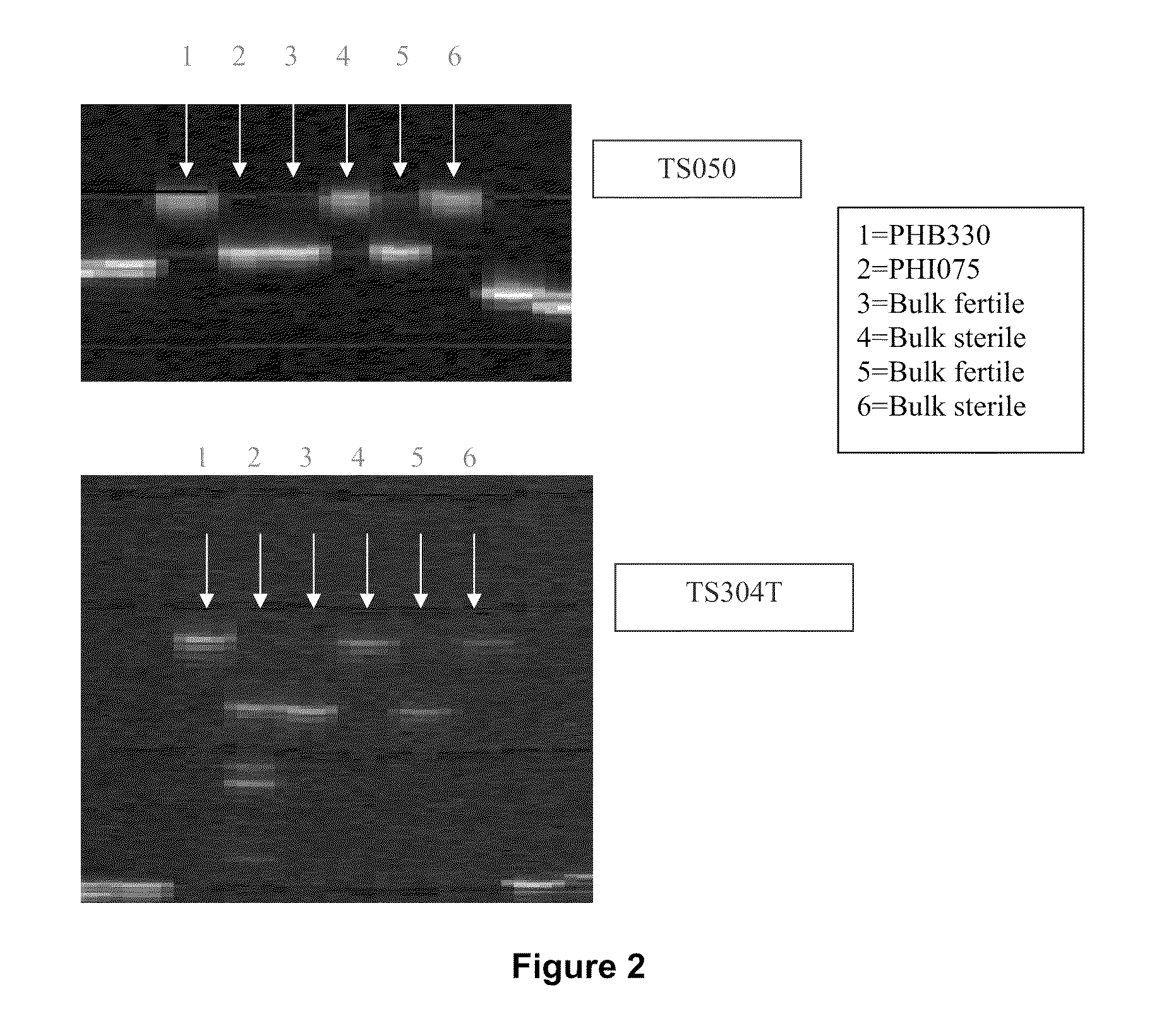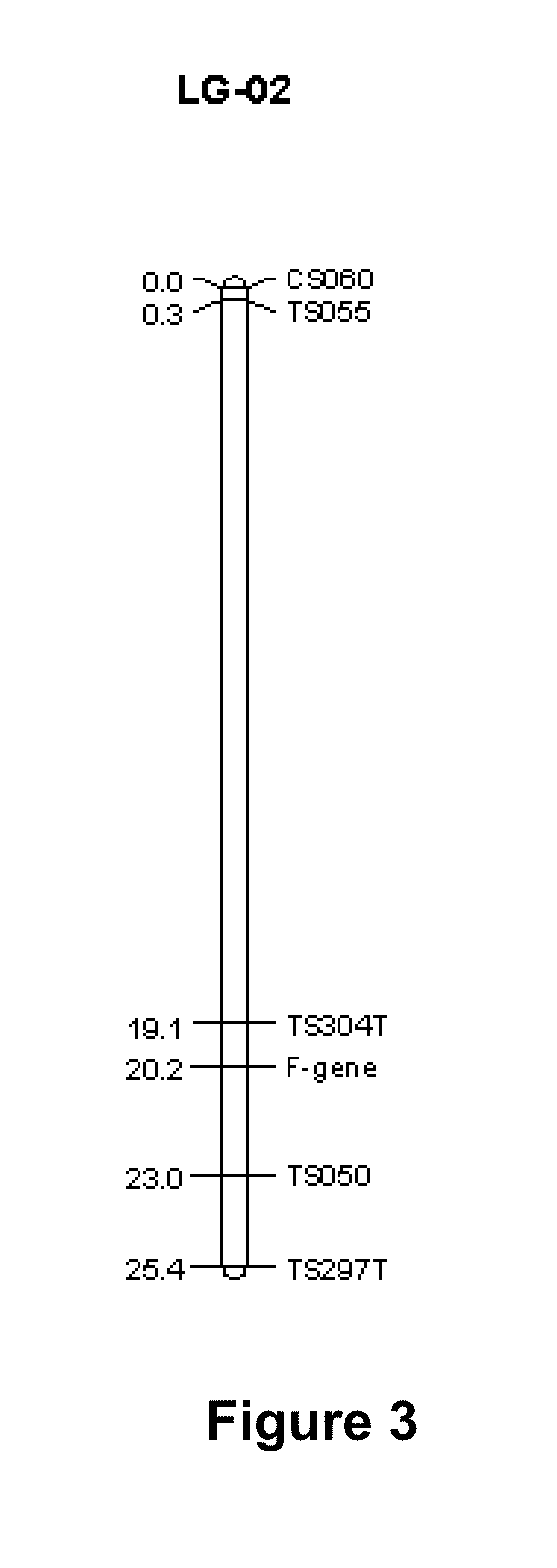Sorghum fertility restorer genotypes and methods of marker-assisted selection
a technology of sorghum and fertility restorer, applied in the field of sorghum (sorghum bicolor) cms fertility restorer gene, can solve problems such as limited activity
- Summary
- Abstract
- Description
- Claims
- Application Information
AI Technical Summary
Benefits of technology
Problems solved by technology
Method used
Image
Examples
example 1
Mapping the Restorer Gene Using F2 Population and Recombinant Inbred Line (RIL)
[0153]To map the restorer gene, an F2 population and recombinant inbred line (RIL) population were created from the cross of PHB330 (non restorer) by PH1075 (restorer). RILs were produced by continually self-pollinating heads from the F2 populations until homozygosity (F5 and beyond). Initially, 300 randomly selected heads were bagged from the F2 population from the cross. The resulting F3 seeds were planted in F3 head rows. A self-pollinated (bagged) single plant was selected from each row to continue with the next generation of self-pollination. Each of the resulting RILs was characterized for restorer and non restorer capabilities by test crossing with a male-sterile female line and scoring seed set on the resulting hybrids.
[0154]It was previously reported that a sorghum restorer gene (Rf1) was mapped on LG-08 (previously designated as LG-H) of the sorghum linkage map (Klein, et al., (2001) TAG 102:120...
example 2
Mapping the Restorer Gene Using Bulk Segregant Analysis
[0155]To map the restorer gene using the F2 mapping population, a bulk segregant analysis (BSA) approach was used initially to identify the target region. According to phenotypic scores, two restorer bulks and two non-restorer bulks were made from an F2 population derived from the cross of PHB330 (non restorer) and PH1075 (restorer), in which each bulk consisted of 30 F2 plants.
[0156]Two hundred forty fluorescent-labeled SSRs that were previously shown to have different alleles between the two parents (i.e. were polymorphic) were selected for screening the parents and bulks on the ABI377 DNA Sequencer. To generate the linkage map of the region containing the fertility gene, 15 markers were used (Table 1). Among them, eight SSR markers, TS298T, TS197, TS304T, TS297T, TS050, CS051, CS060 and TS286T from LG-02 were found putatively linked to the restorer gene.
[0157]
TABLE 1List of markers on LG B and sourcePioneerF_primerR_primerSSR...
example 3
Mapping the Restorer Gene with F2 Population
[0158]Based on the BSA results, the entire population consisting of 270 F2 plants from the cross of PHB330×PH1075 were run with 11 SSR markers selected from the region identified on LG-02 of sorghum public linkage map. These markers included SDB043, TS197, CS051, TS297T, TS050, TS304T, CS060, TS055, TS298T, TS019N and TS286T. Mapping results confirmed that the restorer gene is located on LG-02.
PUM
| Property | Measurement | Unit |
|---|---|---|
| temperature | aaaaa | aaaaa |
| height | aaaaa | aaaaa |
| temperature | aaaaa | aaaaa |
Abstract
Description
Claims
Application Information
 Login to View More
Login to View More - R&D
- Intellectual Property
- Life Sciences
- Materials
- Tech Scout
- Unparalleled Data Quality
- Higher Quality Content
- 60% Fewer Hallucinations
Browse by: Latest US Patents, China's latest patents, Technical Efficacy Thesaurus, Application Domain, Technology Topic, Popular Technical Reports.
© 2025 PatSnap. All rights reserved.Legal|Privacy policy|Modern Slavery Act Transparency Statement|Sitemap|About US| Contact US: help@patsnap.com



